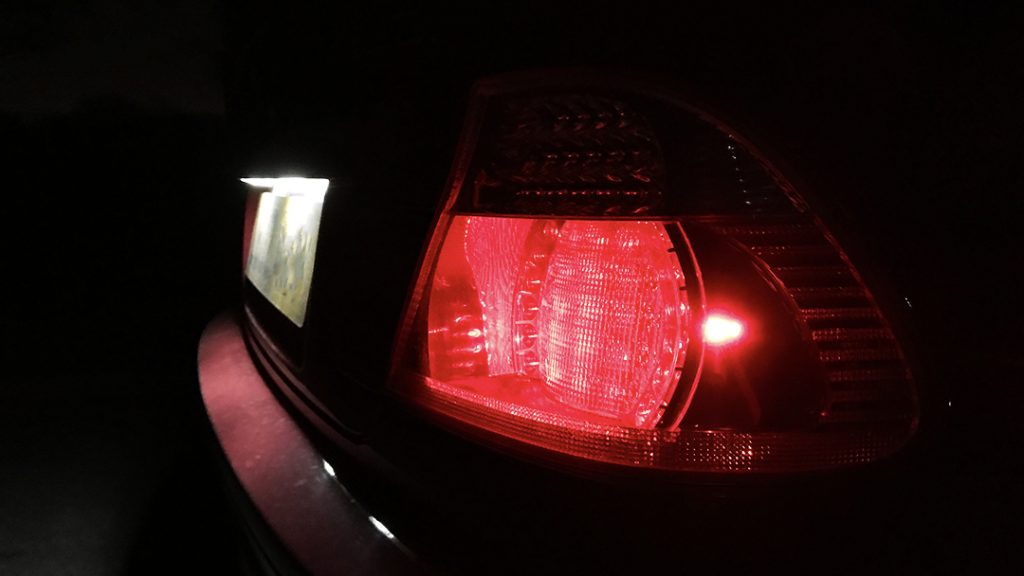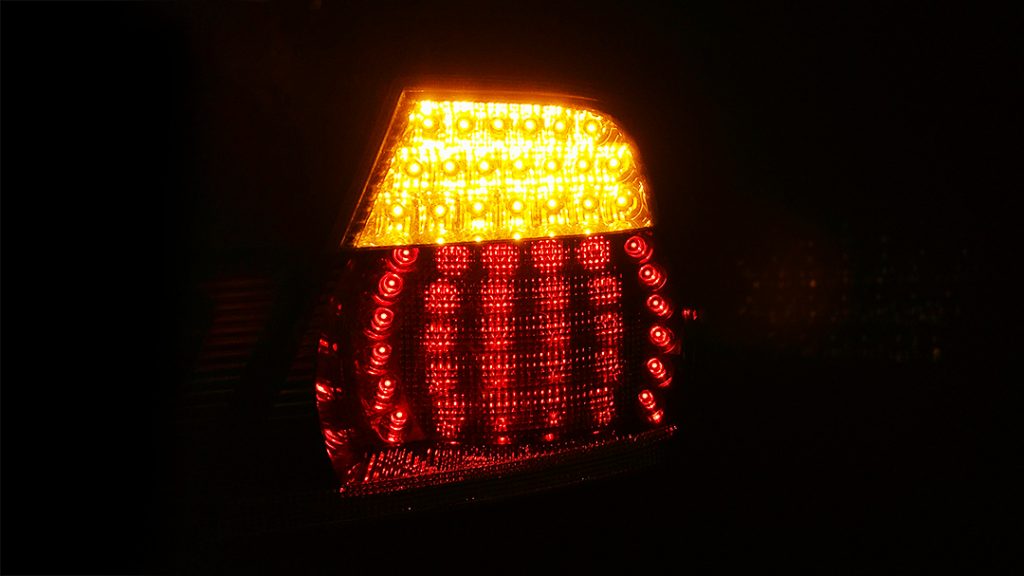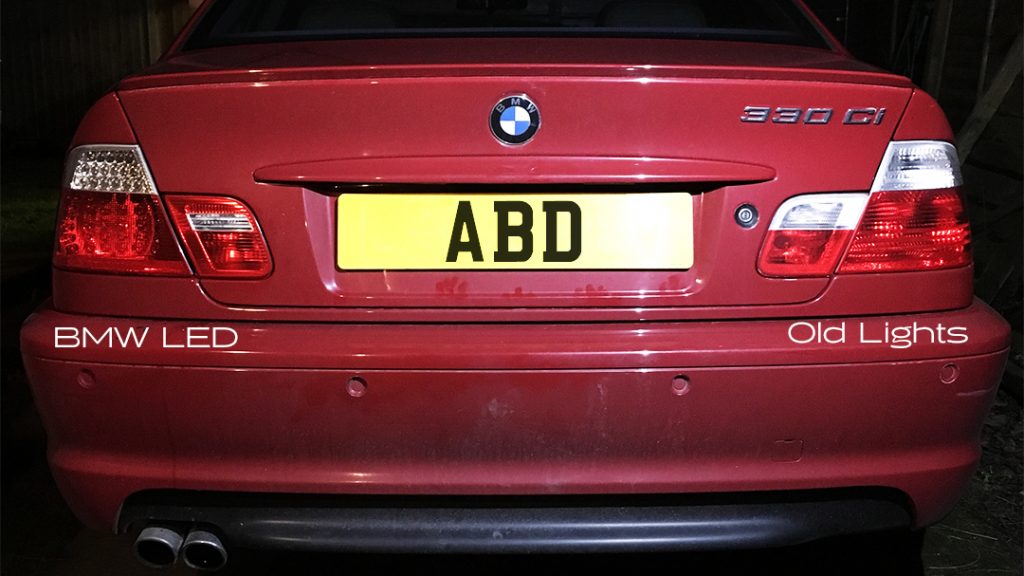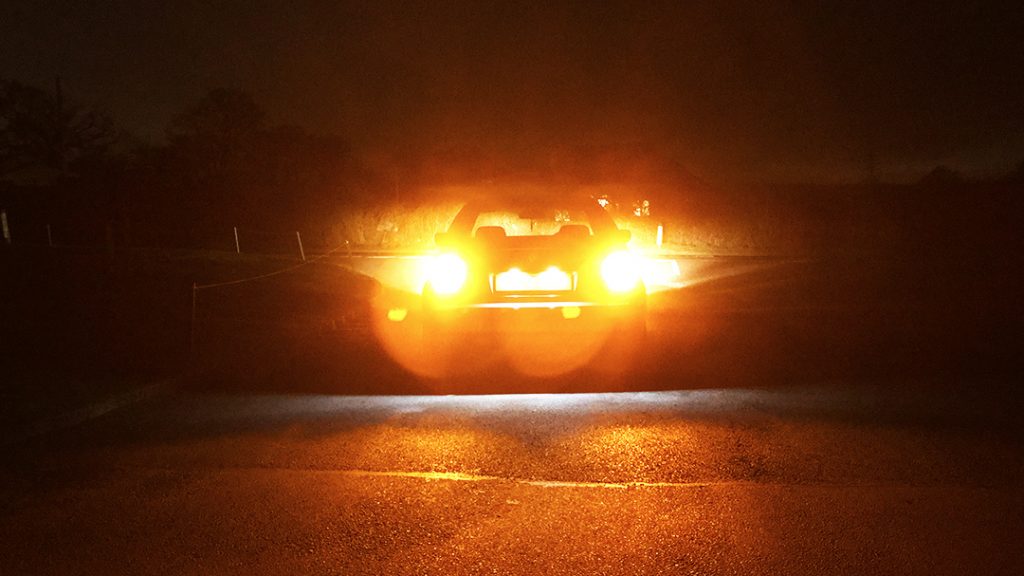A comment on our last blog got us thinking. Can you have the updated look of LED’s and it be road legal? What does it take?
Well, the first thing you need is a car that, at some point in its life, has been “facelifted” with some LED lights. If a manufacturer has designed and fitted LED lights to a production car in the EU then they have passed all the stringent tests and have been “E” marked.

It just so happens that I own an E46 coupe which was later facelifted with rear brake, tail and indicator LEDs.

The next step is to source these lights. Brand new from BMW these lights are over £400. There are a lot of aftermarket copies for less but these run the risk of not being ECE approved (not road legal) also. I therefore, opted for a second-hand set of genuine BMW ones. In total with wiring adaptors and postage this cost me around £200, for some lights! But they are road legal.
I fitted them myself so there was no labour costs involved but it’s something to bear in mind if you’re not so willing to remove and replace the lights.

The last hurdle is compatibility and this will differ from car to car. With the cars CANbus system, it detects the LEDs as a fault and causes them to flicker and pulse. Without remedy, this results in the lights still not being road legal. Luckily, my car was made in a very specific era where it didn’t come with these lights but is able to be coded to accept them. After going around a few BMW dealers and receiving blanks stares I eventually found a BMW specialist who could do this. With 1/2 hour labour charge it was another added cost, but once done, they are working perfectly and fully road legal.

For me, this was less about them being road legal, and more about it facelifting the car. However all this vs just changing the bulb? With the Twenty20 Cree LEDs you can achieve very similar results in just a few seconds…
Author: ABD.co.uk


Can any one tell me if my golf mk 7 1400 cc can take the light thats in the gte or the R
Hi,
I’m thinking of replacing my stop/tail bulbs on my 2007 Skoda Octavia Estate. It currently has 382 single filament bulbs for both stop/tail and tail/fog lights. Do the equivalent LEDs vary intensity in the same way a filament bulb would? If so what bulbs would you recommend?
Thanks,
Dave
Hi Dave
LED 382 bulbs work in the same way as the equivalent filament bulb. However I should point out that as a 382 bulb is a single filament bulb, it does not vary in intensity. Normally you have one bulb for the tail light and another for the brake light. The perceived change in intensity is simply the other bulb lighting up. In dual filament bulbs such as the 380 or 566 bulb, these contain one lower wattage filament (5W or 4W respectively) and a higher wattage filament (21W). With these bulbs, it is on the lower wattage filament on tail function, and then the 21W filament lights up when braking. This gives a very distinct change in intensity on the bulb. Our LED 380 and 566 bulbs also act in the same way as this with a distinct change in intensity between the 2 functions. Hope this helps :-)
Old thread but vw use a single filament and get dual brightness by switching it on and off really fast. They’re not twin filament bulbs.
I’ve never heard of “switching it on / off really fast”….
On some cars, they use a single filament bulb and supply just half the power so it illuminates at 25% or 50%…. Then supply 100% of the required power which makes the bulb illuminate at it’s full level of brightness.
So a brake/tail bulb that OP says is 382 is at 25% brightness for tail, then when he brakes it forces more power to the bulb (making it brighter).
It’s an extremely rare thing to see on a vehicle in the UK and is hard to get as an LED as they are either “on” or “off”.
It’s called pulse width modulation and is common on vehicles with multiplexed electrics.